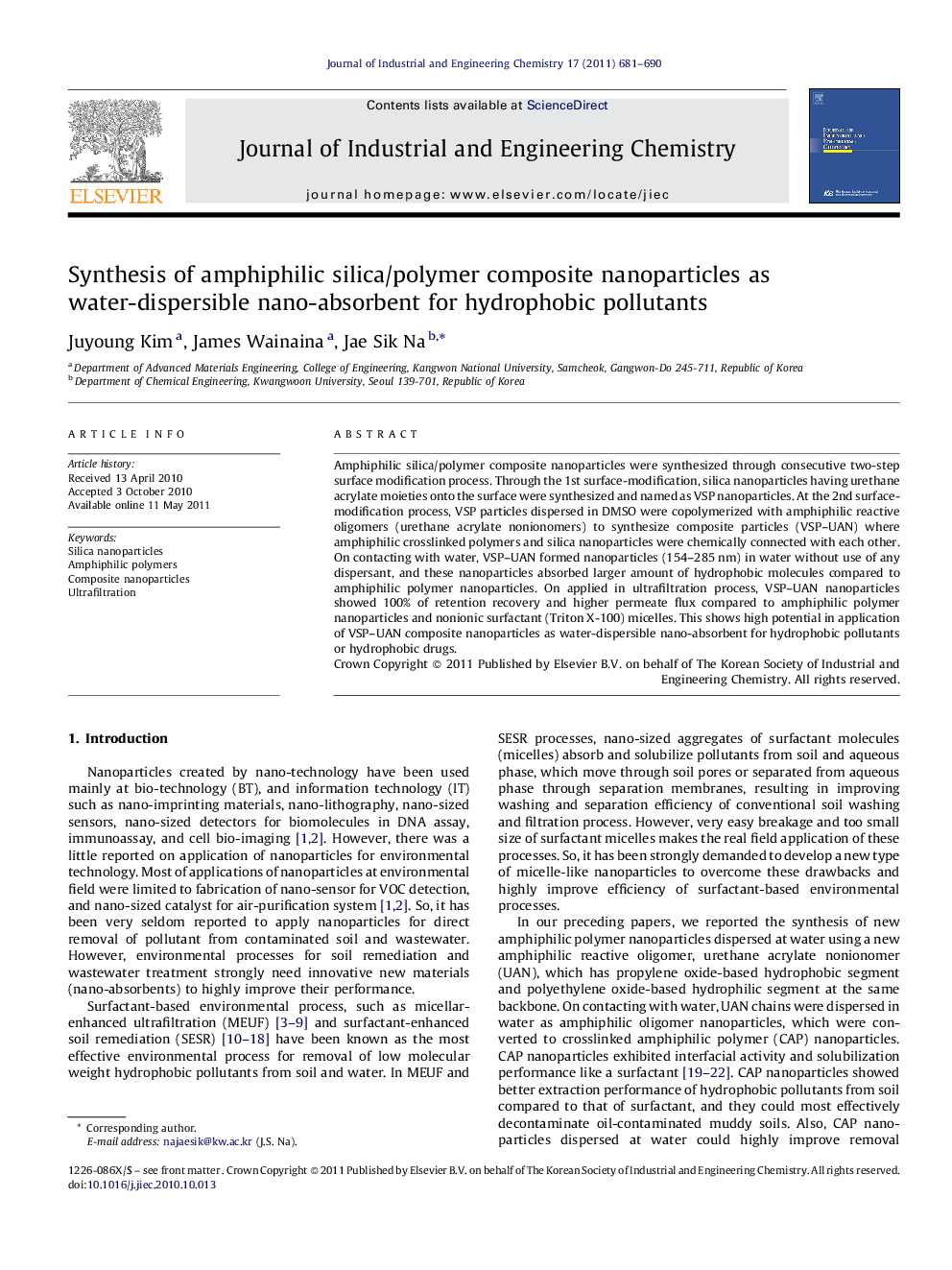| Article ID | Journal | Published Year | Pages | File Type |
|---|---|---|---|---|
| 228510 | Journal of Industrial and Engineering Chemistry | 2011 | 10 Pages |
Amphiphilic silica/polymer composite nanoparticles were synthesized through consecutive two-step surface modification process. Through the 1st surface-modification, silica nanoparticles having urethane acrylate moieties onto the surface were synthesized and named as VSP nanoparticles. At the 2nd surface-modification process, VSP particles dispersed in DMSO were copolymerized with amphiphilic reactive oligomers (urethane acrylate nonionomers) to synthesize composite particles (VSP–UAN) where amphiphilic crosslinked polymers and silica nanoparticles were chemically connected with each other. On contacting with water, VSP–UAN formed nanoparticles (154–285 nm) in water without use of any dispersant, and these nanoparticles absorbed larger amount of hydrophobic molecules compared to amphiphilic polymer nanoparticles. On applied in ultrafiltration process, VSP–UAN nanoparticles showed 100% of retention recovery and higher permeate flux compared to amphiphilic polymer nanoparticles and nonionic surfactant (Triton X-100) micelles. This shows high potential in application of VSP–UAN composite nanoparticles as water-dispersible nano-absorbent for hydrophobic pollutants or hydrophobic drugs.
